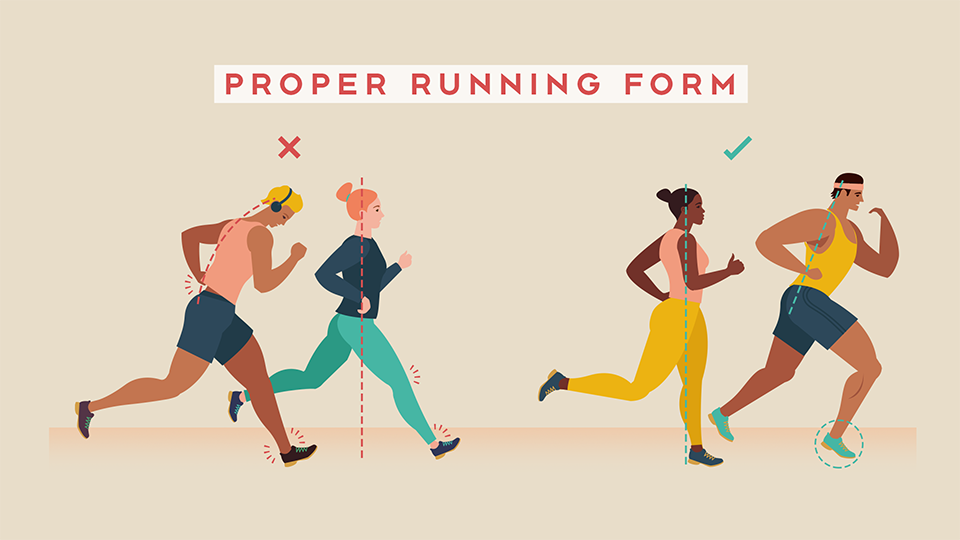What Happens if You Sprint Every Day?

Sprinting every day can lead to improved speed and power but also carries a higher risk of overuse injuries and overtraining. Proper recovery, including rest days and stretching, is essential to prevent injury and burnout.
There are many reasons why runners choose a sprint workout. Whether your goal is building muscle, losing weight, or getting faster, sprint interval training is a powerful tool when implemented correctly.
- What are the health benefits of sprint training?
- How often can you do a high-intensity workout such as sprinting?
- What practical tips are there for sprinting?
- Does sprinting help long-distance runners?
As always, we have answers to your questions.
What Happens to Your Body if You Sprint Every Day?
Sprinting every day can have both positive and negative effects on your body, depending on various factors like your fitness level, training intensity, and recovery strategies.
Benefits of sprinting:
- Improved Speed: Consistent sprinting can lead to improved speed and power. Your muscles become more efficient at generating force and your neuromuscular coordination can improve.
- Cardiovascular Health: Sprinting is a high-intensity cardio exercise that can enhance heart health. It increases your heart rate and strengthens the heart, improving its ability to pump blood.
- Muscle Strength: Sprinting engages the major muscle groups, particularly the lower body. Regular sprinting can lead to muscle mass and power.
- Fat Loss: Sprinting is an effective way to burn calories and reduce body fat. It can help you maintain a healthy body composition and support weight loss.
- Elevated Metabolism: High-intensity activities like sprinting can elevate your metabolism, leading to increased calorie expenditure even after the exercise session.
- Mood Enhancement: Exercise, including sprinting, can trigger the release of endorphins, which can improve mental health and reduce stress and anxiety.
- Positively Impact Bone Density: As we age, it is normal to lose bone density. Sprinting is an excellent form of exercise to help you maintain bone density.
- Toning: Sometimes, it is more about changing your body composition than the number on the scale. Speed work, especially sprinting, is an excellent way to tone up your body and can lead to fat loss.
Negative effects of sprinting:
- Overtraining Risk: Sprinting every day without sufficient recovery can increase the risk of overtraining. Overtraining can lead to physical and mental fatigue, decreased performance, and increased risk of injuries.
- Injury Risk: Sprinting places significant stress on your muscles, tendons, and joints, making you more susceptible to overuse injuries like shin splints, hamstring strains, and stress fractures.
- Muscle Soreness: Daily sprinting can lead to muscle soreness, especially if you’re not allowing enough time for recovery. This soreness can impact your performance and daily activities.
- Joint Stress: The high-impact nature of sprinting can stress your joints, especially the knees and ankles. Over time, this can lead to joint discomfort or injuries.
- Burnout: Daily sprinting can become mentally taxing and lead to exercise burnout. It’s important to ensure your sprint training remains enjoyable and sustainable.

So, Should You Do Sprints Every Day?
Most athletes should not sprint every day. It is best to sprint between two and four days each week. Even world-class sprinters do not sprint every day.
Sprint workouts can be combined with strength training, easy runs, plyometrics, and core work for a well-rounded workout regimen.
There needs to be more than sprinting to build your speed. Plyometric training is an excellent way to awaken your fast-twitch muscles, as are squats.
Sprint Training Basics
What is the best way to sprint?
There are some things to think about if you want to sprint. Running with proper sprinting form will help you. To perfect your sprinting technique, here are some things to remember:
- Run tall! Your head, neck, and shoulders are in line with your hips.
- The upper body is very important. Your arms should move from front to back. Try not to let them cross your torso.
- Elbows should be bent at 90 degrees.
- Let your feet land directly beneath you.
- Run with a high knee lift.

Practical Tips for Beginner Sprinters
Our best advice for beginner sprinters is to start with small, easy sprint sessions. You don’t even need a track to get started. You can add speed bursts into your workout routine as easily as putting speed bursts at the end of your workout.
If you want to try your hand at a track workout, start with 100- or 200-meter sprints. Be sure to warm up properly before trying to run hard or fast to avoid injury.
Also, remember to:
- Engage in dynamic stretches like leg swings, high knees, and butt kicks
- Wear lightweight shoes designed for speed and agility
- Incorporate strength training exercises into your routine. Exercises like squats, lunges, and plyometrics can help improve your sprinting performance
- Incorporate HIIT workouts (high-intensity interval training) into your training:Examples include:
- Sprinting: Run at your maximum speed for 20-30 seconds.
- Burpees: Perform as many burpees as you can in 30 seconds.
- Jumping Squats: Do as many jumping squats as you can in 30 seconds.
- Mountain Climbers: Quickly alternate bringing your knees toward your chest while in a push-up position for 30 seconds.
- Follow each high-intensity interval with a brief recovery interval
- Allow your body to recuperate between sprinting sessions to prevent overuse injuries
- Stay hydrated and consider a light snack or carbohydrate-rich meal before sprinting
Practical Tips for Veteran Runners
Many veteran runners also fall into the trap of running every run at the same pace. Mixing up the pace and tempo from one run to the next would benefit their training.
When incorporating sprints into your workout, remember to:
- Regardless of your running experience, it’s essential to warm up properly before sprinting. Engage in dynamic stretches, such as leg swings and high knees
- If you’re targeting endurance in addition to speed, longer sprints (e.g., 400 meters or more) can help. These longer sprints challenge your anaerobic and aerobic systems and improve your overall conditioning
- Incorporate interval training with varying sprint distances. For instance, perform a series of shorter sprints (50-100 meters) followed by longer sprints (200-400 meters). This interval work can help you build both speed and endurance
- Include specific speed workouts in your training plan. For shorter sprints (e.g., 50-100 meters), perform maximum effort sprints with full recovery between repetitions. Concentrate on your top-end speed during these workouts
- Incorporate hill sprints; find a steep hill and sprint up it, then walk or jog back down as your recovery
How Long of Sprints Should You Do?
Don’t try to sprint for too long. In a track meet, the longest event classified as a sprint is the 400-meter dash. Most people consider a sprint to be a race 200 meters or shorter. Your sprint intervals should be quick with recovery after.
Lastly, people often ask how fast they should sprint. If you are sprinting for a short distance, you should be running at a nine on a perceived effort scale of 1-10.
If your goal is to get faster, you will ideally run the same distances on a regular basis so you can determine how long it takes you to travel a set distance. This gives you a gauge of how you are improving.
What Time of Day Should You Sprint?
Every person is different. Some people get a better quality workout in if they work out first thing in the morning, while others perform best mid-day.
Trail and error is the best way to determine your ideal time for challenging workouts.
Latest Articles
 Is Running on a Treadmill Easier Than Running Outside?Runners have their own preferences, whether it is treadmill running, running outside on the road, or exploring trails. So...
Is Running on a Treadmill Easier Than Running Outside?Runners have their own preferences, whether it is treadmill running, running outside on the road, or exploring trails. So... Is It OK to Use Trail Running Shoes on the Road?While trail running shoes can be used on roads, especially in situations where a runner encounters mixed terrains or pref...
Is It OK to Use Trail Running Shoes on the Road?While trail running shoes can be used on roads, especially in situations where a runner encounters mixed terrains or pref... How to Fix Sore Quads After Running?Rest, ice, gentle stretching, and over-the-counter pain relievers can help soothe sore quads after running. Also, ensure ...
How to Fix Sore Quads After Running?Rest, ice, gentle stretching, and over-the-counter pain relievers can help soothe sore quads after running. Also, ensure ... 10 Fruits With The Most Electrolytes to Replace Sports DrinksThese fruits are high in electrolytes such as potassium, magnesium, and calcium, essential for hydration, muscle function...
10 Fruits With The Most Electrolytes to Replace Sports DrinksThese fruits are high in electrolytes such as potassium, magnesium, and calcium, essential for hydration, muscle function...

